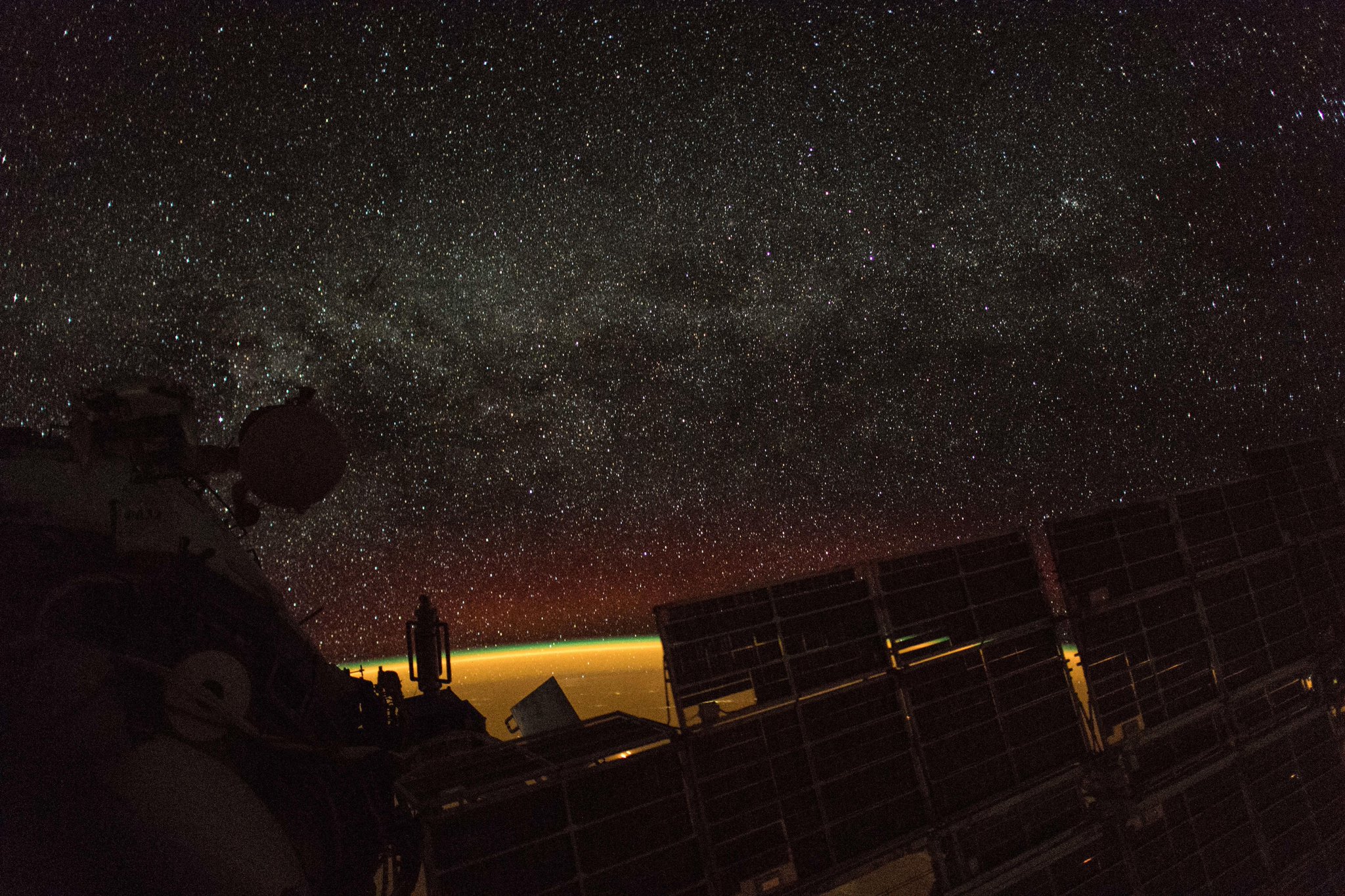[:ja]今週最後の投稿は、アレックス・ゲルスト宇宙飛行士がISSから撮影した天の川です。

天の川は、夜空を横切るように存在する雲状の光の帯のことですが、地球を含む太陽系は数ある銀河の一つ(=「天の川銀河」)の中に位置しており、この銀河を内側から見ているために天の川が天球上の帯として見えています。天の川銀河の中心はいて座の方向にある。なお、天の川のあちこちに中州のように暗い部分があるのは、星がないのではなく、暗黒星雲があって、その向こうの星を隠しているためです。
参考文献: Alex Gerst’s Tweet
地球俯瞰画像を見る: LiVEARTH
[Earthview Wonders] No.708: Milky Way
This week ends with the photo of the Milky Way Astronaut Alex Gerst captured from ISS.

The Milky Way is the galaxy that contains our Solar System. It is a barred spiral galaxy with a diameter between 150,000 and 200,000 light-years. It is estimated to contain 100–400 billion stars and more than 100 billion planets. The name describes the galaxy’s appearance from Earth: a hazy band of light seen in the night sky formed from stars that cannot be individually distinguished by the naked eye. From Earth, the Milky Way appears as a band because its disk-shaped structure is viewed from within.
Reference: Alex Gerst’s Tweet
See earthview photo gallery: LiVEARTH[:en][Earthview Wonders] No.708: Milky Way
This week ends with the photo of the Milky Way Astronaut Alex Gerst captured from ISS.

The Milky Way is the galaxy that contains our Solar System. It is a barred spiral galaxy with a diameter between 150,000 and 200,000 light-years. It is estimated to contain 100–400 billion stars and more than 100 billion planets. The name describes the galaxy’s appearance from Earth: a hazy band of light seen in the night sky formed from stars that cannot be individually distinguished by the naked eye. From Earth, the Milky Way appears as a band because its disk-shaped structure is viewed from within.
Reference: Alex Gerst’s Tweet
See earthview photo gallery: LiVEARTH[:]